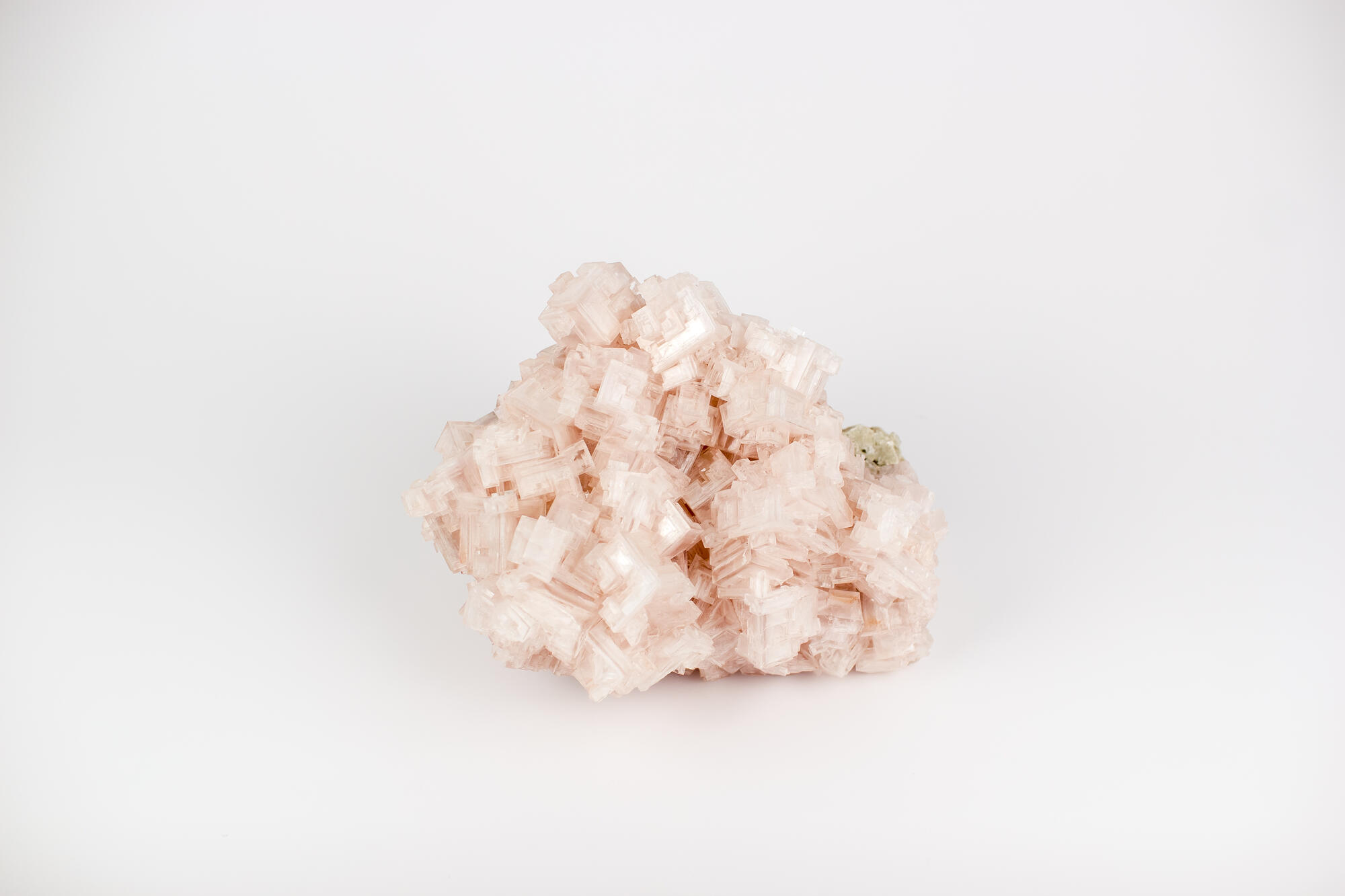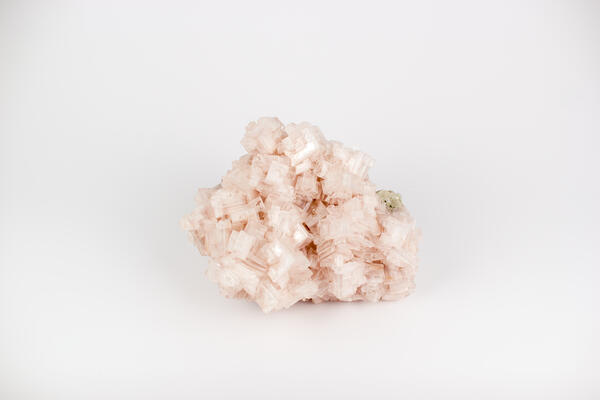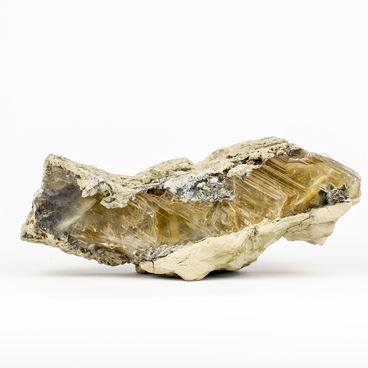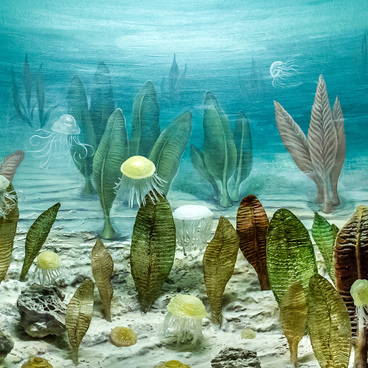Halite is a rock salt, a mineral from which table salt is extracted. Its name comes from the Greek word ‘halos’ — salt. It is found mainly in layers of sedimentary rocks and sediments of saline water bodies.
Halite usually forms crystal clusters. In caves, they can take the form of stalactites and stalagmites, and in place of lakes and lagoons, they form growths on rocks, plants, and other surfaces. Such crystals are most often colorless or grayish-white, but impurities can color them in various shades: from pale pink and yellow to dark blue.
Rock salt crystals become very flexible under high pressure. Under the weight of rocks, they form giant figures that later come to the earth’s surface. They can take different shapes — hemispheres, cylinders, columns. Such figures grow very slowly: the age of some of them reaches 150–200 million years.
One of the largest rock salt deposits in Russia is Lake Baskunchak in the Astrakhan region. It was mined here in the 18th century CE and then sent along the Silk Road to other countries. Baskunchak salt is especially pure: it contains only 0.2% of impurities. Now about 80% of all Russian salt is mined here — from 1,5 to 5 million tons per year.
There are several varieties of edible rock salt with different compositions. It may contain a large amount of iodine, fluorine, or no impurities at all. In such cases, it is called high-purity salt. There is also a dietary or therapeutic salt: it is rich in potassium and magnesium. It is often advised for the elderly or people with poor health to use this salt instead of the seasoning.
Rock salt is not only used in cooking. The so-called technical halite is used in winter as gritting salt: it helps to deal with ice. In medicine, salt is one of the ingredients of medicines and solutions for injection, it is used for warming in cases of joint diseases. And in the leather industry, halite serves as a tanni
Halite usually forms crystal clusters. In caves, they can take the form of stalactites and stalagmites, and in place of lakes and lagoons, they form growths on rocks, plants, and other surfaces. Such crystals are most often colorless or grayish-white, but impurities can color them in various shades: from pale pink and yellow to dark blue.
Rock salt crystals become very flexible under high pressure. Under the weight of rocks, they form giant figures that later come to the earth’s surface. They can take different shapes — hemispheres, cylinders, columns. Such figures grow very slowly: the age of some of them reaches 150–200 million years.
One of the largest rock salt deposits in Russia is Lake Baskunchak in the Astrakhan region. It was mined here in the 18th century CE and then sent along the Silk Road to other countries. Baskunchak salt is especially pure: it contains only 0.2% of impurities. Now about 80% of all Russian salt is mined here — from 1,5 to 5 million tons per year.
There are several varieties of edible rock salt with different compositions. It may contain a large amount of iodine, fluorine, or no impurities at all. In such cases, it is called high-purity salt. There is also a dietary or therapeutic salt: it is rich in potassium and magnesium. It is often advised for the elderly or people with poor health to use this salt instead of the seasoning.
Rock salt is not only used in cooking. The so-called technical halite is used in winter as gritting salt: it helps to deal with ice. In medicine, salt is one of the ingredients of medicines and solutions for injection, it is used for warming in cases of joint diseases. And in the leather industry, halite serves as a tanni



